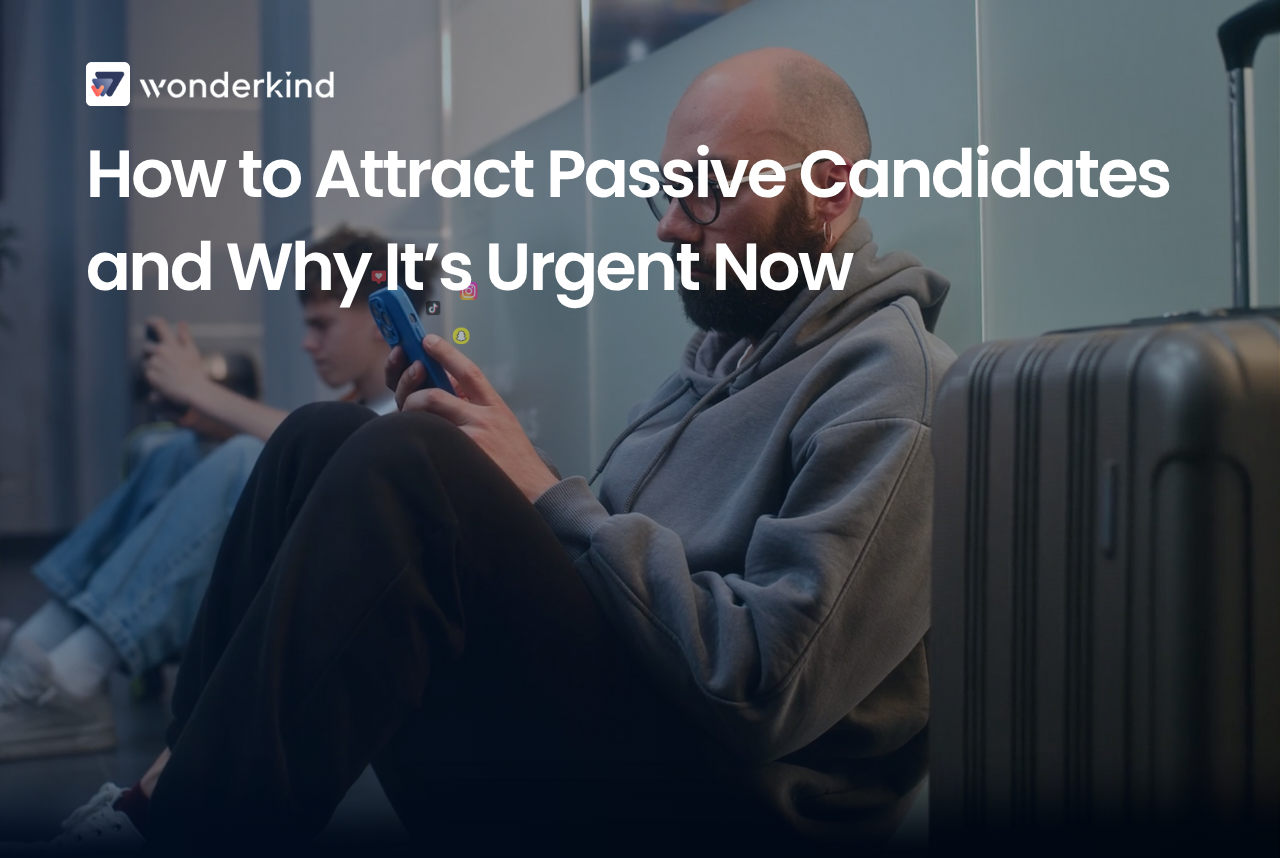Best Recruitment Advertising Campaigns of 2025 (and What You Can Learn From Them)

Recruitment advertising has changed more in the past three years than it did in the last decade.
The reason? Attention has become the new currency.
In a world where job seekers spend hours scrolling social feeds, traditional job ads are getting drowned out by everything else competing for their time, such as short-form content, video games.
That’s why the best recruitment advertising campaigns of 2025 aren’t on job boards or career pages anymore.
They’re social-first recruitment campaigns, built to show up inside the digital spaces where candidates already spend time.
These campaigns don’t just announce vacancies; they attract talent by acting like marketing campaigns, with visually engaging, mobile-first, and designed for shareability.
Across retail, logistics, and even defence, leading employers are using this approach to reach Gen Z and other hard-to-reach groups.
Below are three standout examples from 2025 that prove how social-first recruitment is redefining what effective hiring looks like, and what you can learn from them.
.png)
1. Kruidvat: “Apply With Your Bestie”
This campaign from retail-pharmacy chain Kruidvat was awarded first place in the 2025 Rally® Awards for Recruitment Marketing.
What they did:
- Targeted younger audiences (Gen Z) by encouraging applicants to tag a friend, apply together, attend the interview as a duo, and work shifts side-by-side.
- Used social media reels, short video content and peer-referral logic instead of just job-board listings.
- Apply via WhatsApp: Replaced long application forms with a WhatsApp chat. Candidates could message directly, get matched with a recruiter within 24 hours, and be linked to a nearby store.
Why it works:
Kruidvat’s approach is truly social-first, not just because it uses social channels, but because it speaks Gen Z’s language: connection, convenience, and conversation.
- Convenience: Using WhatsApp meets candidates on the platform they already use daily, removing friction from the process.
- Conversation: Messaging creates immediacy and authenticity, replacing the old “form-submit-wait” dynamic with a friendly interaction.
What you can learn:
- Meet your audience where they already are, which are on mobile and messaging apps.
- Turn applying into a social act, not an administrative one.
- For high-volume industries, speed and simplicity drive conversion.
2. Social + Gaming Recruitment for Australian Defence Force
The Australian Defence Force (ADF) reached record applicant levels in 2025 by advertising directly inside video games and expanding onto TikTok.
What they did:
- Embedded interactive recruitment ads in game environments.
- Partnered with gaming influencers to discuss discipline, teamwork, and adventure.
- Extended campaign reach to TikTok and YouTube Shorts to connect with younger audiences.
Why it works:
The ADF recognized that attention is location-based, and right now, that location is digital entertainment.
- Channel innovation: Meeting candidates inside the environments they already inhabit (gaming, social).
- Lifestyle-driven messaging: Focused on purpose, teamwork, and challenge instead of military formality.
- Passive reach: Captured audiences who weren’t actively looking for jobs, who were just playing.
What you can learn:
Relevance is everything. If your audience spends time gaming, streaming, or scrolling, your message should meet them there, with content that feels native, not intrusive.
3. Edeka: Turning TikTok Views Into Applications
German supermarket chain Edeka went beyond employer branding with its 2025 TikTok campaign, where they transformed short-form content into a direct recruitment funnel for store roles.
What they did:
- Launched playful TikTok “duels,” like “Who scans faster at checkout?”, letting real employees show the job in action.
- Embedded quick-apply links and store-level job opportunities directly into their TikTok bio and posts.
- Used retargeting ads to reach viewers who engaged with the videos, driving them to simplified mobile landing pages.
Why it works:
Edeka turned content into a conversion path, not just awareness.
- Job-led storytelling: Each video wasn’t about “culture”. It was about what the job looks and feels like in real life.
- Frictionless apply path: Social-to-apply links meant candidates could go from viewer to applicant in one tap.
- Data-driven targeting: Retargeting engaged viewers kept their ad spend focused on warm audiences likely to apply.
What you can learn:
If your social posts get attention but not applications, you’re doing branding, not recruiting.
The difference lies in the funnel: make it possible for candidates to apply as soon as they’re interested.
Common Thread Across All Campaigns
These campaigns show a clear evolution in recruitment advertising:
- Social-first is the new default: All successful campaigns started where people spend most of their time.
- Frictionless experience wins: WhatsApp chats, mobile flows, and short-form video all remove barriers to entry.
- Emotion beats efficiency: From “Apply with your Bestie” to gaming ads, emotion and connection drive conversion more than logic or job titles.
What recruiters can learn:
You don’t need a global budget to create a great campaign, just alignment between message, medium, and mindset.
The Wonderkind Advantage
Wonderkind helps recruiters present themselves to the next generation with visual-first, social-ready job ads that look and feel native to the platforms.
Powered by AI, our technology creates and promotes these campaigns across multiple social channels, from TikTok to Meta and Reddit. We ensure your message fits in and stands out in the attention economy.
Instead of static job posts, Wonderkind helps you tell your story visually, reach candidates where they actually are, and compete authentically for their attention.
Want to learn more about our Talent Attraction Technology?
Make more placements while keeping a clear overview of costs and ROI.



